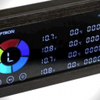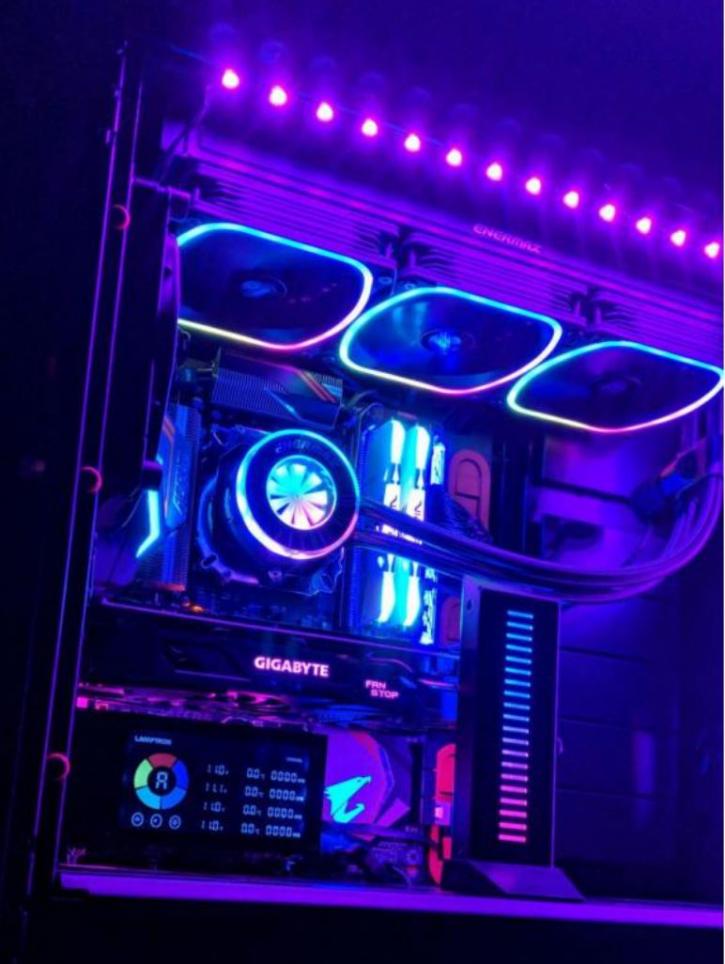Functional usage
Functional usage
Installation is rather easy (maybe a bit time consuming to manage all the cables). You receive the SM436 in two main parts. We installed the LCD in the main compartment, under the GPU. You need to remember that it takes up three PCI slots (I don’t understand why regular screws were provided instead of thumbscrews). The actual control unit can be hidden, and that’s what we did. Both parts are connected with a black wire, which is a good solution because it blends into the background quite well. You need to use the SATA power connector (which is used for powering up the display) and the Molex connector (for the fans and lighting).
Personally, I don’t like Molex, but it’s still a good solution when a lot of power needs to be supplied to a device, so it probably was the only option here. The control box has no mounting holes, but some double-sided tape did the job (unfortunately none is provided). You can hide this unit in a 3.5”, tray for example.
You can use up to four fan ports. Each of them can handle up to 36 watts, which is enough even for liquid cooling pumps. Even if you had, let’s say, five of six 140 mm fans, it would still be hard to reach 20 watts of power consumption. The RGB ports provided here offer the standard 12V lighting support (up to 60 LEDs) and also addressable 5V lighting (the same limit per port). There shouldn’t be any issues with powering even the most sophisticated lighting systems here. The reviewed version has the RGB Sync feature, which lets you synchronize with motherboard lighting systems, so the difference here is the two additional RGB headers. One of them is for the addressable channels, and the other is for 12V lighting. Lamptron provided two extension cables, to connect to the motherboard header (or other lighting controllers).
I’ve tried the sync with the Asus ROG Strix Z390-E Gaming and Phanteks Evolv X, and it worked well.
You can select different fan header modes, such as quiet, performance, automatic etc., which is a good idea. The LCD looks good in the chassis, you can see the fan speed and temp sensors straight away (if you have the case on the desk). The display itself looks fine and can be very useful at times. One remark here is that maybe it could be upgraded to OLED in the future, to provide better contrast/viewing angles etc. Also, some other (custom?) animations would be welcome.
Here’s a marketing photo from Lamptron. As you can see, you can use the display to fill the empty space in your chassis (if you’re not using a CF/SLI setup). Going back to the user experience, it would be nice to be able to upload your personal layout (or have more predefined ones), and maybe some animations.






